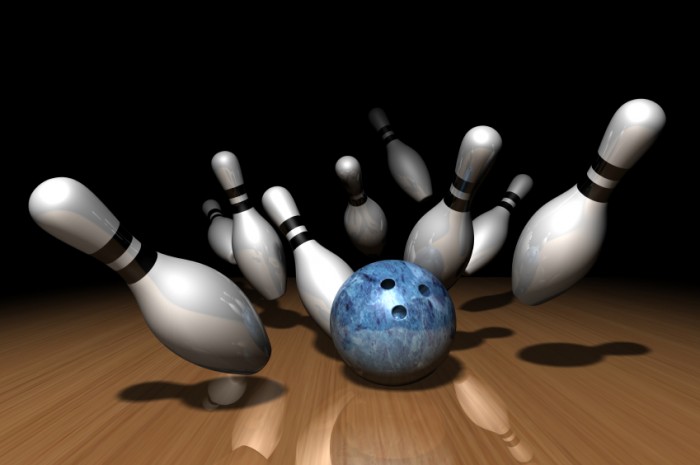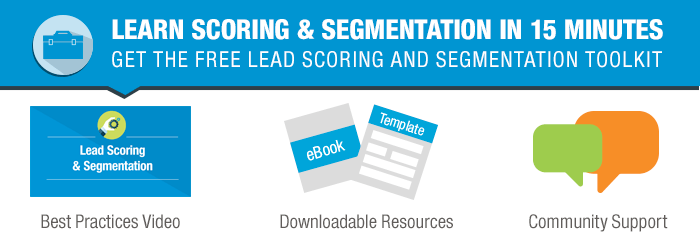 I‘ve been in sales for 20 years, and I can say for certain that new sales leads are vital to a company’s continued existence. However, once marketing gets those leads flowing, it soon becomes apparent that there’s more to success than just pure volume.
I‘ve been in sales for 20 years, and I can say for certain that new sales leads are vital to a company’s continued existence. However, once marketing gets those leads flowing, it soon becomes apparent that there’s more to success than just pure volume.
Leads are not all created equally – some are likely to purchase much sooner than others. If those not-quite-ready leads are passed to sales, the result is: We wind up burning precious time on the wrong leads. And there is an attendant opportunity cost of not paying attention to the leads that are readier to close.
Sales leaders like it when marketing incorporates lead scoring into the company’s lead generation programs. The most effective lead scoring schemes are joint endeavors; sales and marketing together identify critical factors and assign values to them. When scores are applied, the marketer can more easily identify which potential customers are closest to making a purchase – and which will require more effort to convert. Or to become sales ready.
Lead scoring is effective, but it’s also manual and time-consuming. In order for it to scale at all, you’ll want to integrate your lead scoring process into a robust marketing automation platform. This gives your sales and marketing teams a powerful tool for effectively managing leads, nurturing relationships, shortening conversion timeframes, sharing intelligence, and increasing sales.
What Is Lead Scoring?
Lead scoring is the process of assigning a value to the leads your sales and marketing efforts have generated. You can score by such categories as industry and title; if your best customers are mostly in one particular industry, for example, you’d give leads in it a higher score when you first begin to take notice of them. You can score by behaviors. If you know that a lead’s visit to the pricing page on your web site is a buying signal, then you score that above less-important behaviors.
When leads are acquired, they fall into a particular place in the sales funnel. While most may enter at the top of the funnel, not all will. As an example, leads that you see first as webinar attendees (as opposed to those who just open an email) are usually more interested in your offerings and closer to making a purchase than those behaving more passively. You would give those webinar attendees a higher score. This helps the lead enter the lead funnel at a more appropriate place.
Basic Techniques of Lead Scoring
Lead scoring involves gathering relevant information on leads and, based on that information, assigning a score. When defining their scoring scheme, sales and marketing teams should include the definitions and actions that indicate a lead’s sales readiness or level of interest, as well as the factors that increase and decrease a lead’s score.
Types of Information to Gather
The two main types of information are demographic and behavioral.
Demographic information is about who they are. For example, job title and responsibilities, company size, company revenue, industry, types of products and services, competitors and partners, and geographic area served. This is usually explicit information that you could gather in a form, interview, survey, or direct interactions.
Behavioral data is about what they do. Examples include website visits, online activities and content clicked on/accessed, participation in online communities and surveys, and levels of interaction in social media. Real-world participation in events such as trade shows and seminars can also be part of this data. This is usually information you gather implicitly, through website visitor tracking and other kinds of reports.
You can apply negative scores; you don’t want someone who visits your careers page four times a day to look like a prospect, and negative scoring will accomplish that.
Time is also a factor. Five visits in two days is far more promising than five visits in five months.
Linking Lead Scoring With Marketing Automation Tools
Lead scoring is a highly manual process unless it’s managed by a marketing automation system. In this instance, the information scoring data provides adds value to lead and contact activity histories.
Here are four immediate benefits of incorporating lead scoring into marketing automation:
1. Automated tracking of demographic and behavioral factors: By integrating lead scoring with your marketing automation platform tools – e.g., email, website tracking, and CRM systems – sales can easily keep the pulse on each lead’s demographic information and online behavior. This capability gives sales a wealth of information at their fingertips, allowing reps to more efficiently and effectively nurture the right leads.
2. Automated scoring: This takes the manual management out of lead scoring, automating the process of moving leads along your scoring scheme based on the criteria you established. Subjective interpretations are eliminated and lead quality and consistency are improved.
3. Lead prioritization. Lead scores indicate which leads should be focused on first. Some marketing automation systems generate daily lists of hot leads prioritized by lead score, and send these directly to the sales rep, who can focus on the most likely to close first.
4. Real-time alerts when relevant lead scores are achieved: Automated alerts and daily scoring reports prompt sales reps to focus on leads that have the highest chance for conversion. This not only optimizes sales’ time and improves resource efficiency, it increases closing rates and revenue streams.
Lead scoring has turned out to be one of marketing automation’s great wins. A very valuable but very manual process becomes a strategic tool that runs 24/7, and proactively shares information. The need for sales and marketing to work together to develop scoring schema and parameters also brings the two teams closer to achieving parity and attaining a mutual goal: Leads delivered to sales at the right time, ready for contact.

